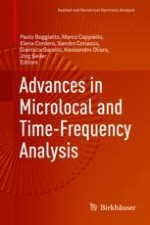2020 | Buch
Advances in Microlocal and Time-Frequency Analysis
herausgegeben von: Paolo Boggiatto, Marco Cappiello, Elena Cordero, Sandro Coriasco, Gianluca Garello, Alessandro Oliaro, Jörg Seiler
Verlag: Springer International Publishing
Buchreihe : Applied and Numerical Harmonic Analysis
